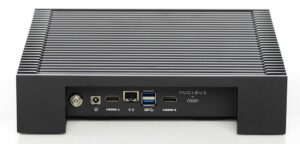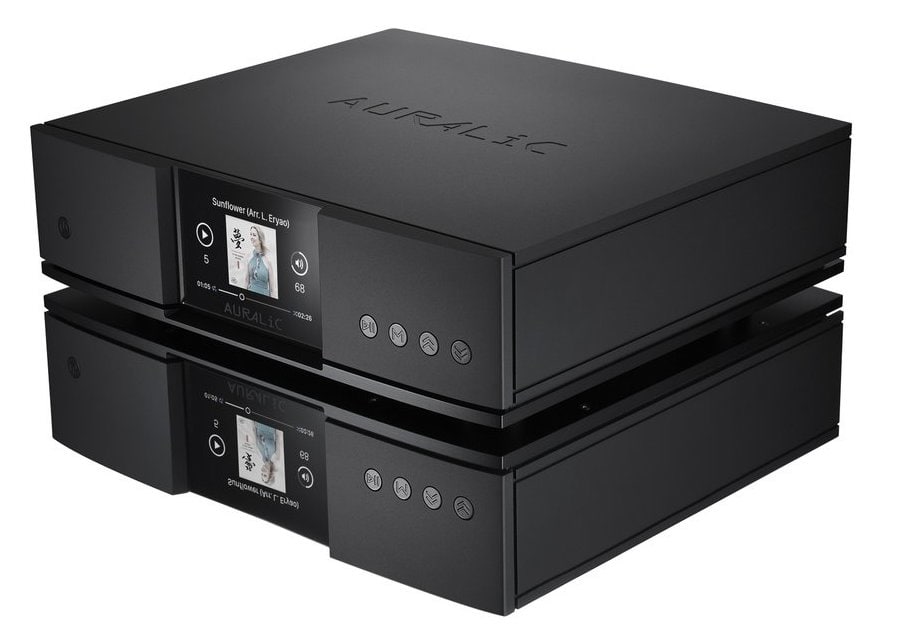In past articles I have referenced the differences between how my audio system sounds vs. the way my friend Ira’s sounds.
My system is analog-based but also has great CD/SACD playback capability. Ira’s is solely CD/SACD based.
Neither of us were into streaming.
We wanted to remain “pure!” (That is weird to refer to digital as “pure”…LOL.)
We both had come to terms, over many years, with what we considered to be the best way to listen to music. We both agonized for hours over the greater and smaller differences between every aspect of our systems.
The last thing either one of us wanted to do was to open up another door.
Best to keep it closed. After all, streaming is just another way of playing back digital files and we both have great CD collections and players. We thought, let’s just keep well enough alone. And all of the options involving high-resolution streaming playback made it all the more daunting. How would be choose between Qobuz and TIDAL (to name just two)?
Oh yeah, you have to buy a streamer and maybe a DAC (or a combo component that handles both), and then decide whether to connect it through Wi-Fi or Ethernet. Not to mention, how are you going to connect all these devices – what kinds of cables do you need and want, as well as the power cords for each piece?
Once hooked up and paying for the highest-possible sound transfer, then we’d have to compare the sound quality of the stream vs the CD/SACD vs. the vinyl….
And Roon?
Too damn exhausting.
But (there is always a “but”)…
If you stream, you can open up a world of music choices so vast that it would, could, justify the plunge. But both of us really didn’t want to deal with the new technology.
Until someone gave me a Bluesound NODE 2i streamer. He is a modern-day drug dealer. (”Hey kid, wanna try somethin’ new? You’ll love it. I promise!) So, I did.
 Bluesound NODE 2i Wireless Multi-Room Hi-Res Music Streamer.
Bluesound NODE 2i Wireless Multi-Room Hi-Res Music Streamer.
This is not an equipment promotion or endorsement for the Bluesound NODE 2i (Bluesound is owned by NAD). It was simply a device that I was given so I could test the waters. I left it in the box for a couple of weeks, then opened the box, followed the instructions (and I had an Ethernet port close by) and within a half-hour had it up and running after signing on to TIDAL.
OMG, I was hooked.
So many options of music were available! I wasn’t being very critical about the sound at this point. I was just reveling in the vast amount of musical options.
I called Ira. He hung up on me…LOL. I called back and said, “just borrow it for the weekend.”
I too was becoming a dope dealer…
Ira really didn’t want to. I could tell that he wanted the idea of streaming to just go away. Why? Because I knew that once we both got into it, started going into chat rooms and started delving in the minutiae of streaming hi-res audio, the options for high-quality playback would lead to an almost never-ending quest to get better and better sound.
What happened next blew me away.
We were amazed by the possibilities, even though I could see storm clouds on the horizon. The storm clouds were all the insane variables built into the entire music chain of the streaming audio experience. But in our minds, we needed to get better, faster gear!
I wound up loving the whole streaming experience so much that within two weeks quickly jumped up to a PS Audio DirectStream Digital D/A converter with a Bridge II streaming unit built in.
Ira, after getting hooked on the convenience and choices available through the Bluesound, bought an Auralic ARIES G2.1 Wireless Streaming Transporter (not to be confused with a CD transport – the ARIES G2.1 is solely a streamer with no D2A capabilities). Ira uses the built-in 1-bit DSD DAC in his Marantz SA-10 SACD player as his D/A converter. And the PS Audio DirectStream and Auralic units are just one of many hi-res streaming audio components out there.
 Auralic ARIES G2.1 Wireless Streaming Transporter.
Auralic ARIES G2.1 Wireless Streaming Transporter.
The output of the Auralic has many options and the setup is critical. I used Ethernet for the streaming audio connectivity and Ira used Wi-Fi. Which is better? Just one of many variables. Ira had no choice but to use Wi-Fi as he doesn’t have close access to an Ethernet port. Me?
I do, and bought a very expensive Ethernet cable plugged into an English Electric 8Switch, an active 8-port junction box and re-clocking Ethernet gigabit switch designed for streaming audio applications. It’s connected by a very-high-quality short Ethernet cable that goes into my streamer.
The games had just begun!
The streaming capabilities of the more expensive products sound better than the Bluesound Node 2i, but as a matter of degree. The differences, like most “better” hi-fi gear, can only show up if your system has the ability to resolve the information. The Bluesound Node 2i is actually terrific and a great way to enter this world. (It sells for $549.) I mention these products as points of reference to act as a guide only and not as comparative reviews per se.
Ira and I went back and forth with TIDAL vs. Qobuz. (Other subscription services are available, and there are differences in monthly fees, choices of music and audio quality. But we kept to TIDAL and Qobuz.)
Then I decided to get Roon. Roon is not an easy thing to explain. It’s an app that acts as the “brain” of a streaming audio setup. It manages all of your audio devices, streaming services and any music files you may have that are stored on a music server or computer. But what’s really impressive is that Roon supplies a huge amount of metadata – so much that it makes the information on an album cover (something that most of us grew up with and depended on to learn about the artist whose music we were listening to) seem slight. There is so much additional information about the album, the artist, the songwriters, the producers, as well as other albums by the artist available through Roon that it seems like overkill.
 Roon Nucleus music server, rear panel.
Roon Nucleus music server, rear panel.
I love it.
To be clear, both TIDAL and Qobuz (Ira and I both think Qobuz sounds a bit better, less processed) give you information to read through while you listen. One does not need Roon for this. Roon also provides technology to run the metadata computer information on a Roon-manufactured (sold separately) standalone hard drive called a Nucleus. You don’t need that either, as I use my Apple notebook to run Roon. The advantage of a standalone component like the Nucleus is that it is always on, it removes all the processing work that your computer would otherwise have to to deal with, and it can be used as a “quarterback” to control all aspects of music delivery from any source (streaming service, NAS drive, music stored on your computer or what have you) and send it to any connected audio system in your house.
I have spoken to several Roon reps as well as other high-end professionals about using Roon. I’m sure I have not used its full potential and I’m not sure that I ever will. I will say that the metadata alone is, however, pretty incredible. If that’s worth a monthly, yearly or “lifetime” (yes, they have a pay once for a lifetime subscription deal) appeals to you, then quest forth.
The point of all this is: the more technology is supposed to make our lives easier, the more complicated it seems to get.
I haven’t even gotten into the ethics of streaming as it regards the royalty rates that are paid to artists. [For more about that subject, see Copper’s Stream-o-Nomics article in Issue 130.]
I’m an artist and I ain’t happy about it.
I will say that it does allow our music to be heard by millions more people than would normally have access to it.
As far as the quest for the absolute sound: what I’m hearing is that streaming, as it stands today, is close to but still not quite CD or SACD quality. I don’t care what the bitstream is (16- or 24-bit) or the sampling rate (44.1 48. 88.2, 96, 176.4 or 192 kHz) or if the digital audio file is encoded in MQA or FLAC or whatever. So far, as a direct comparison, my CDs sound just a tad better. I think the reason for this is that anything streamed is compressed. Period. MQA is supposed to rebuild the sonics to pre-streamed levels.
It’s all too much. And don’t take my word for any of this, as I’m a partially deaf rock musician!
Bottom line, I now love streaming, and Ira, the once-devoted CD user who swore that you would have to pry his SACD player from his cold dead fingers, is now a committed streamer and doesn’t listen to his CD player anymore.
Me? I love the options of choice (and sound quality) of streaming, but on a Saturday night, when my wife and I share some wine and peace and quiet, I will always go back to vinyl.
And read the back of the album covers!



